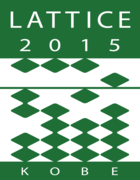Speaker
Prof.
Francesco Sannino
(CP3-Origins & DIAS, University of Southern Denmark)
Description
Circa 95% of the universe is made of unknown forms of matter and energy, while to describe the remaining 5% one needs at least three fundamental forces, i.e. Quantum Electrodynamics, Weak Interactions and Quantum Chromo Dynamics (QCD). Furthermore strong interactions are responsible for creating the bulk of the bright mass, i.e. the 5%. It is therefore natural to expect that to correctly describe the rest of our universe while providing a sensible link to the visible component new forces will soon emerge. For example the standard model sector responsible for breaking the electroweak symmetry spontaneously could be replaced by a new and more natural strongly coupled sector. Another interesting avenue is the possibility that dark matter itself, as the ordinary proton and neutron, is not an elementary particle but rather a state composed by new strongly coupled matter. I will argue that models of composite dynamics are indeed primary candidates for a better understanding of the origin of bright and dark matter in Nature. I will also show by reviewing recent results that Lattice field methods can provide clear and falsifiable predictions for the Large Hadron Collider experiment as well as dark matter direct experiments searches.
I will then switch gear and exhibit the first proof of existence of nonsupersymmetric and non-asymptotically free 4D Gauge-Yukawa theories (structurally similar to the standard model) that are UV finite thanks to the existence of an exact interacting quantum UV fixed point in the gauge, Yukawa and scalar self-couplings. These theories are therefore asymptotically safe. Theories with this behaviour have been searched for on the lattice for the past several decades. The results show the critical ingredients needed to construct these new classes of theories and offer a strategy for future lattice studies. I will then comment on the wide phenomenological impact of this discovery.
Understanding strong dynamics is therefore crucial to construct phenomenologically relevant extensions of the standard model of particle interactions, and ultimately being able to describe our Universe.
Primary author
Prof.
Francesco Sannino
(CP3-Origins & DIAS, University of Southern Denmark)

